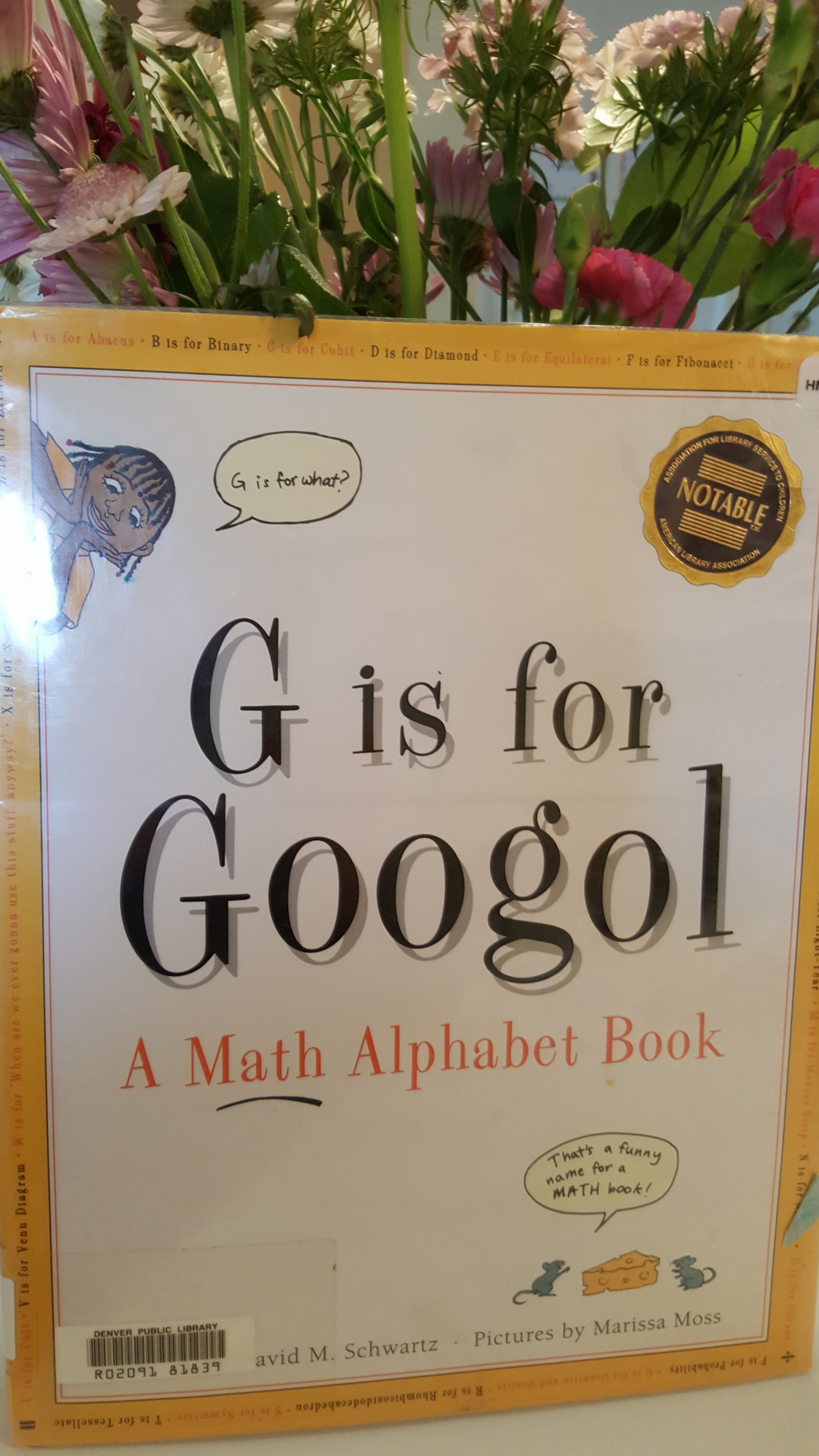Finally! I’m ready to share the curriculum and resources we are using this year with our 5th grader, 2nd grader, and preschooler. In this post I’ll share what’s in our Morning Basket.
Morning Basket Resources
As far as I know, Jennifer Mackintosh over at Wildflowers and Marbles invented the brilliant idea of Morning Baskets. If you’re not already familiar with the idea, head over to her blog and check it out. You’ll also want to spend time just combing through the hundreds of pages of amazing resources she has there. She’s a genius.
The quick version is this. A Morning Basket is literally a basket filled with good things to share with your children. It’s a place to put all of those delicious subjects you never seem to fit into your day – poetry, Shakespeare, composer study, etc. On a “bad day” your Morning Basket can stand alone as school for the day.
There’s no end goal for these books. The idea is to savor each one and have it be as enjoyable as possible. So if people start to get fidgety, we just stop and pick it up again the next day. We’re not doing everything every day but rather plan to work through these by the end of the year. For example we’re starting with The Song of Hiawatha and when we finish it we’ll move to the Oxford poetry book. The Shakespeare is worked on for a couple of weeks at a time, and then set aside for a week or so.
Here’s what’s queued up right now, but it could easily change with my fancy. Clicking on the book image for most of these will take you to amazon.com, but there are no affiliate links on this page.

How to Teach Your Children Shakespeare by Ken Ludwig
This is on recommendation from a friend who always recommends the most wonderful resources. If she says a book is good, I just get it. This one is fabulous. It teaches you to help your children memorize carefully selected passages from Shakespeare. And Mr. Ludwig’s website has a bunch of fun extras to help you out as well. My kids (and I!) have already memorized this passage from a speech by Oberon in A Midsummer Night’s Dream:
I know a bank where the wild thyme blows. Where oxlips and nodding violet grows, quite over-canopied with luscious woodbine. with sweet muskroses and with eglantine. There sleeps Titania sometime of the night, lulled in these flowers with dances and delight. And there the snake throws her enameled skin – weed wide enough to wrap a fairy in. And with the juice of this I’ll streak her eyes and make her full of hateful fantasies!”
I typed that from memory! Even my 4-year-old has memorized the first half of it. And it was painless. And fun!

The Song of Hiawatha by Henry Wadsworth Longfellow Illustrated by Margaret Early
I wish that picture was bigger. I picked up this book at our local Goodwill without realizing how amazing it really is. Having read Paul Revere’s Ride last year, I was eager to share some more Longfellow with the kids. Ms. Early’s illustrations are a perfect complement to Longfellow’s beautiful words. We read just a page or two a day, studying the pictures, reading the poetry, and then narrating the story together. It took the kids a few days to get into it, but then they couldn’t get enough.

Wee Sing America
This is part of the Book Shark curriculum. Because it only takes a few minutes a day and it’s fun for everyone, I’ve put it into our Morning Basket. We’re learning a song a week. I love that we’re expanding our repertoire of singable songs.
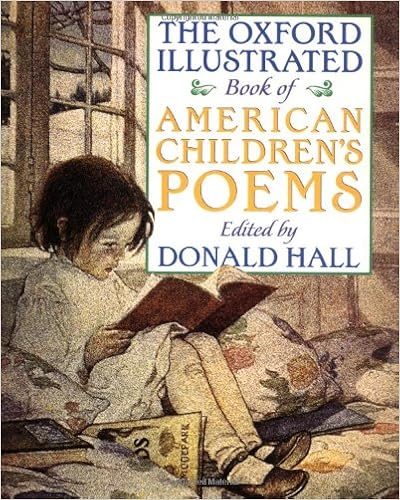
The Oxford Illustrated Book of American Children’s Poems Edited by Donald Hall
This is also from the Book Shark curriculum. We’ll select a poem a week to enjoy and maybe memorize. I’ll probably follow the suggested schedule in the Book Shark curriculum guide.
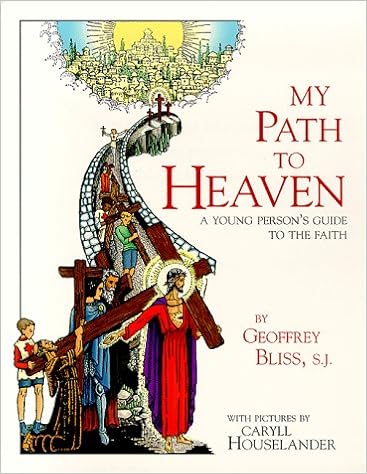
My Path to Heaven: A Young Person’s Guide to the Faith by Geoffrey Bliss, S.J. and Caryll Houselander
A dear friend brought this one to my attention and I picked it up at the Rocky Mountain Home Educators Conference a few months ago. I cannot wait to share this one with my kids. It’s a guide to Ignatian Spirtuality for young people. Each section has an elaborate line drawing with hundreds of little details and one simple thought to ponder. This is followed by a couple of pages of simple text to help one reflect on the idea. For example, the first idea is that everything in your life was placed there by God to help you to better love Him. I have been pondering this for weeks after reading it in this book. I plan to read a passage a day, or maybe just one a week, while the kids look at their own photocopy of the image. They’ll be invited to color it if they like.
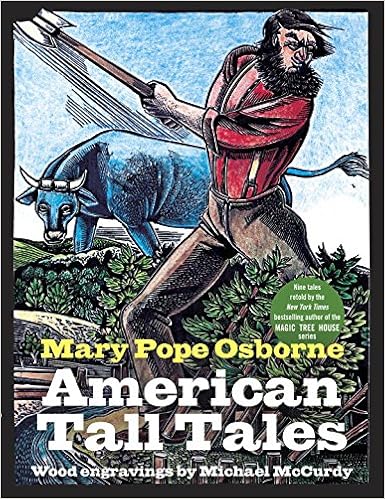
American Tall Tales by Mary Pope Osborne wood engravings by Michael McCurdy
This is another Goodwill steal. It will be a perfect complement to our American History studies this year.
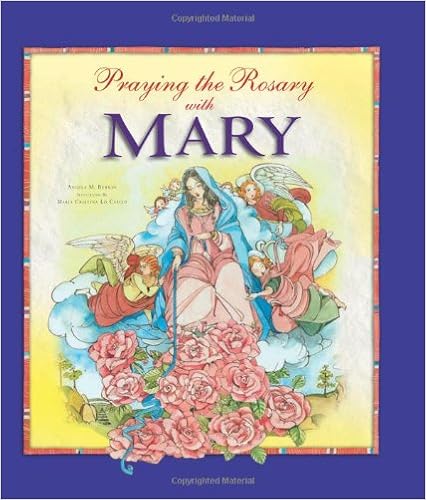
Praying the Rosary with Mary by Angela Burrin, illustrated by Maria Cristian lo Cascio
We’re not one of those families that prays the rosary together every day. We do that in my fantasy family, but in my real family, it just never happens. But I do want my kids to have some familiarity with the rosary. This is a nicely illustrated book in which each of the mysteries is explained through the voice of Mary. Each mystery ends with a short prayer asking for Mary’s help with a particular virtue. We’ve been reading one mystery a day and saying one Hail Mary. It’s been a gentle introduction to the devotion of the rosary.
Memory Work
Latin responses for the Mass. We attend a New Order Mass done in Latin and so I’d like to work through memorizing the plain chant version of the Latin responses for the Mass. I found a little booklet to help us with this. It’s a little slow going.
Math Fact Memory Work. My oldest is dismally behind on math fact memorization. I don’t want to make the same mistake with the other kids, so we’re adding this to our morning basket routine. We went way back and started with the “plus 1” facts. I’m following the order recommended at Mrs. Houlin’s eSchool Class blog. I really like what she has to say about memorizing math facts.
Although this seems like a lot, it actually takes very little time and I’m looking to add to this part of our day because everyone really enjoys it. I’ve decided I’m going to add in some basic grammar instruction and I’m looking for some appropriate Saint study resources. I need to shop my shelves for those. It’s also a great time to share favorite picture books because we normally do this work all snuggled up on the couch together.
It’s taken me awhile to implement Morning Basket time for our homeschool, but I am so glad we’re doing it because it really is the best part of our homeschool day.



